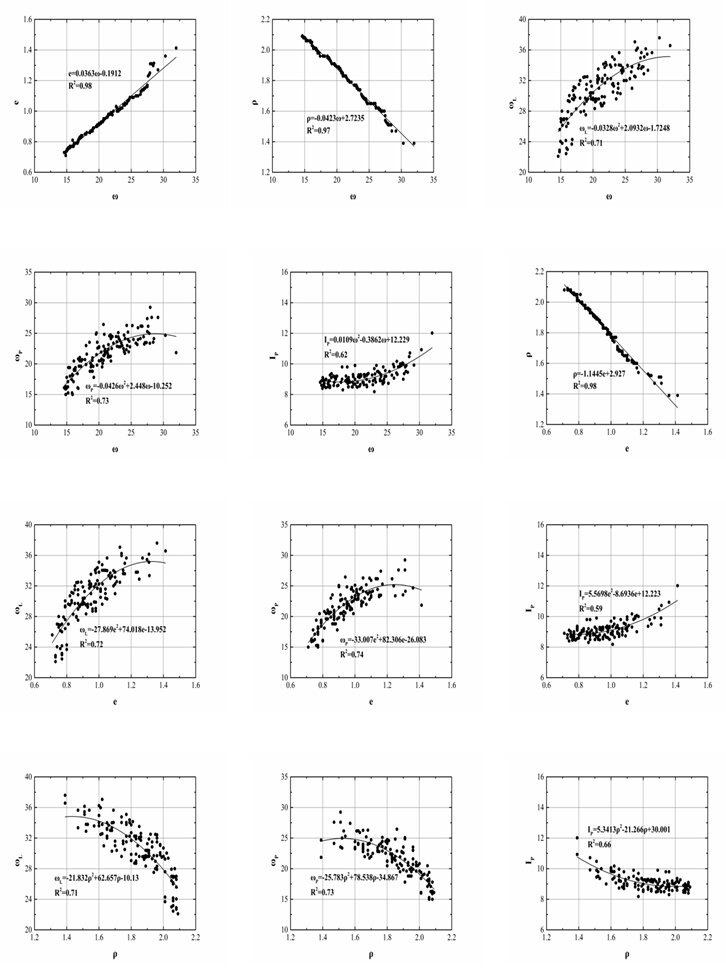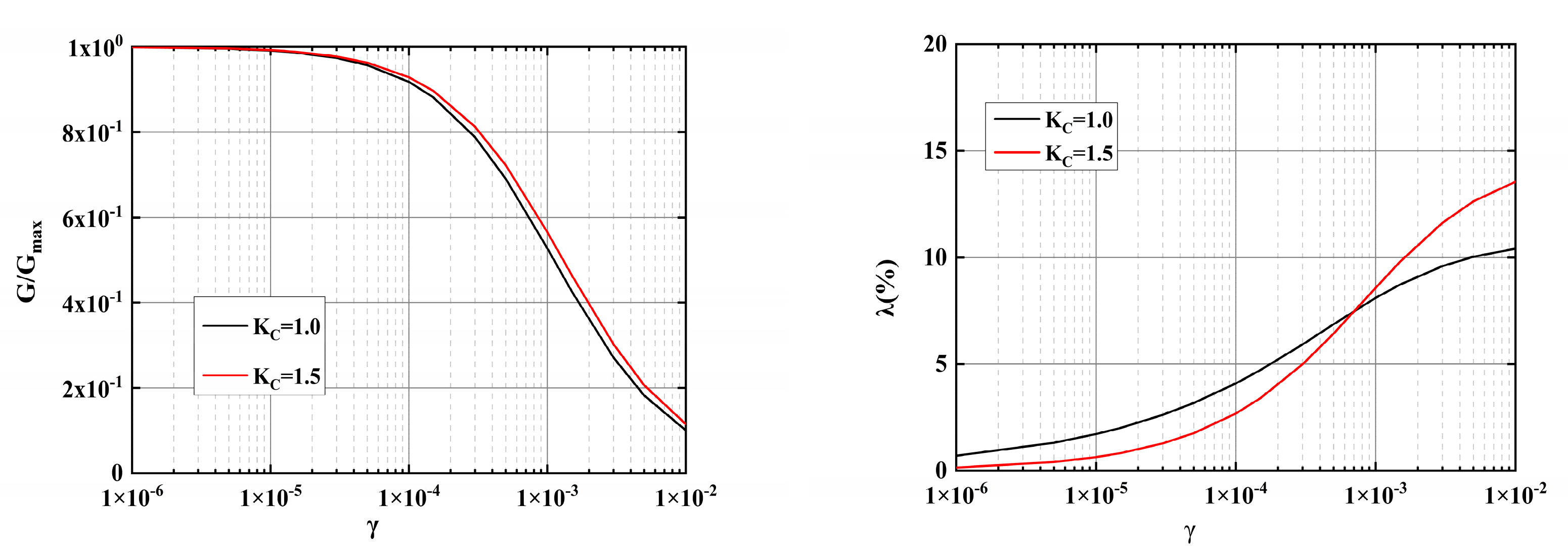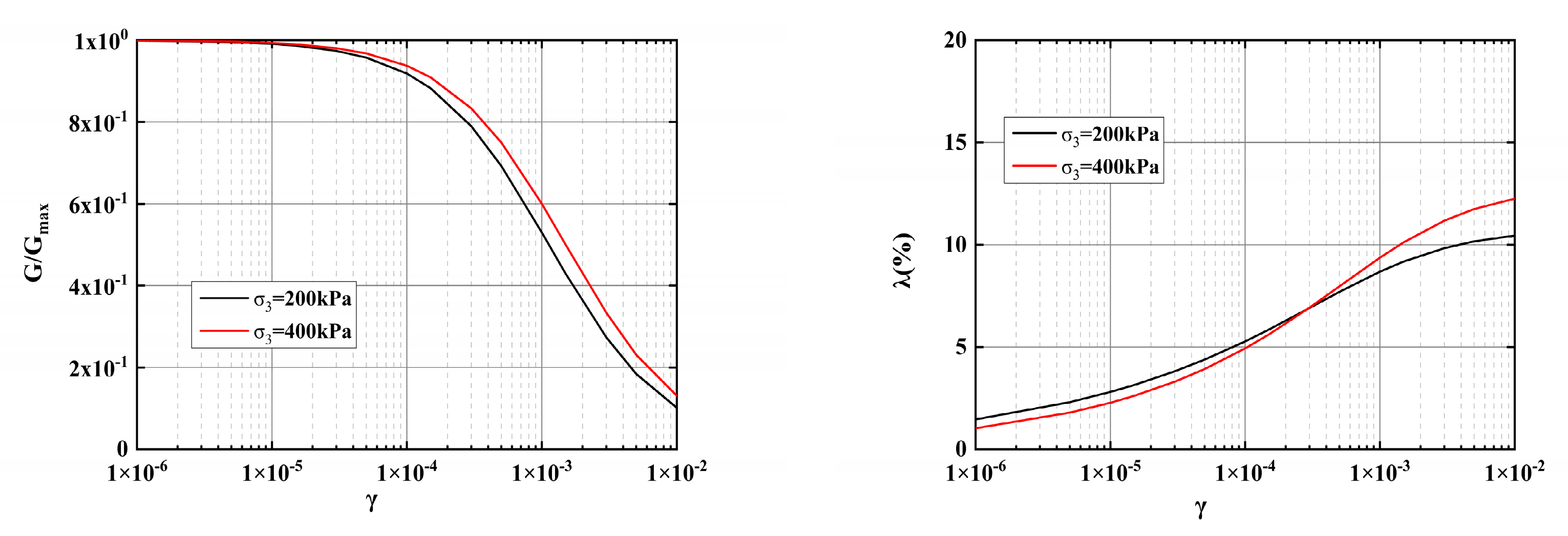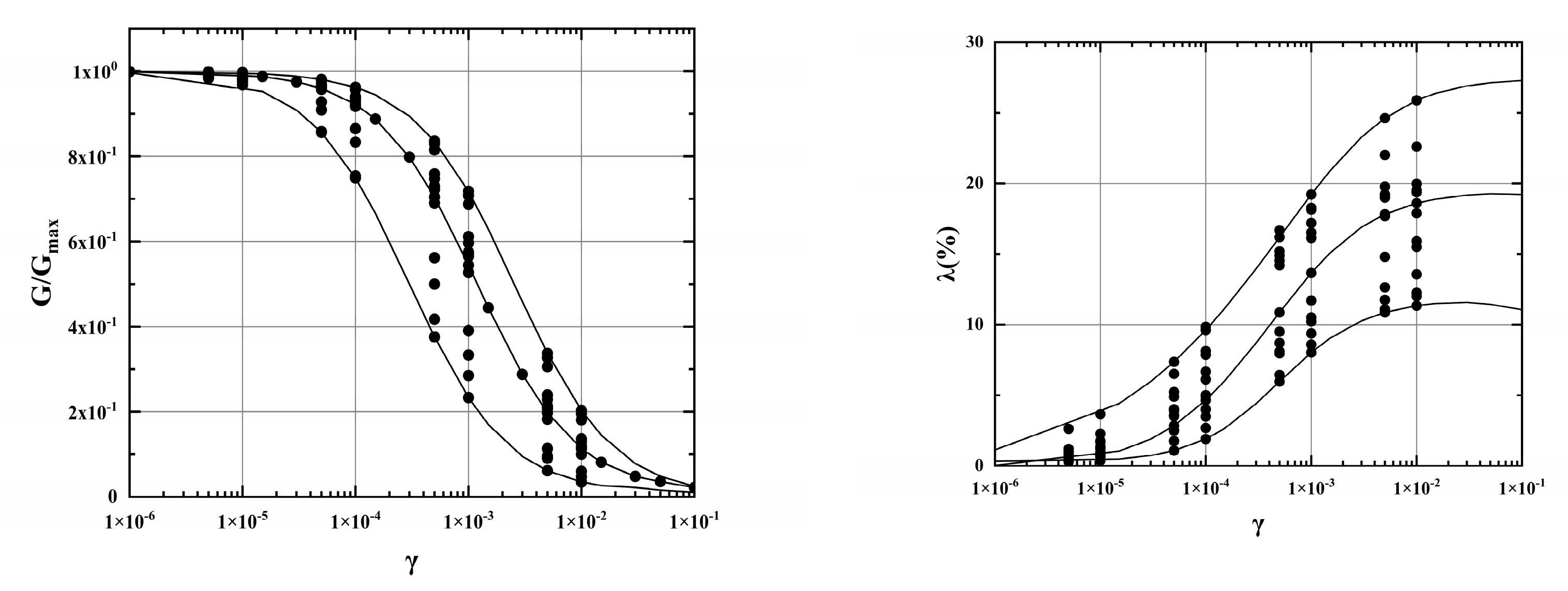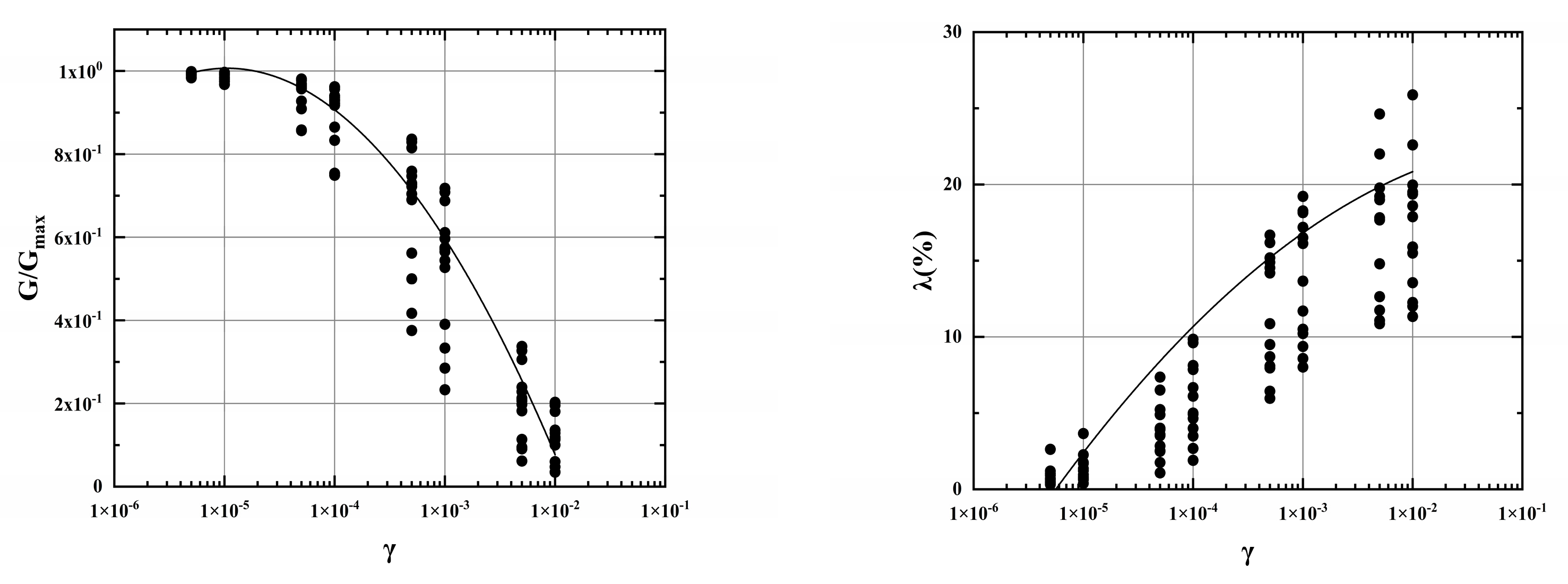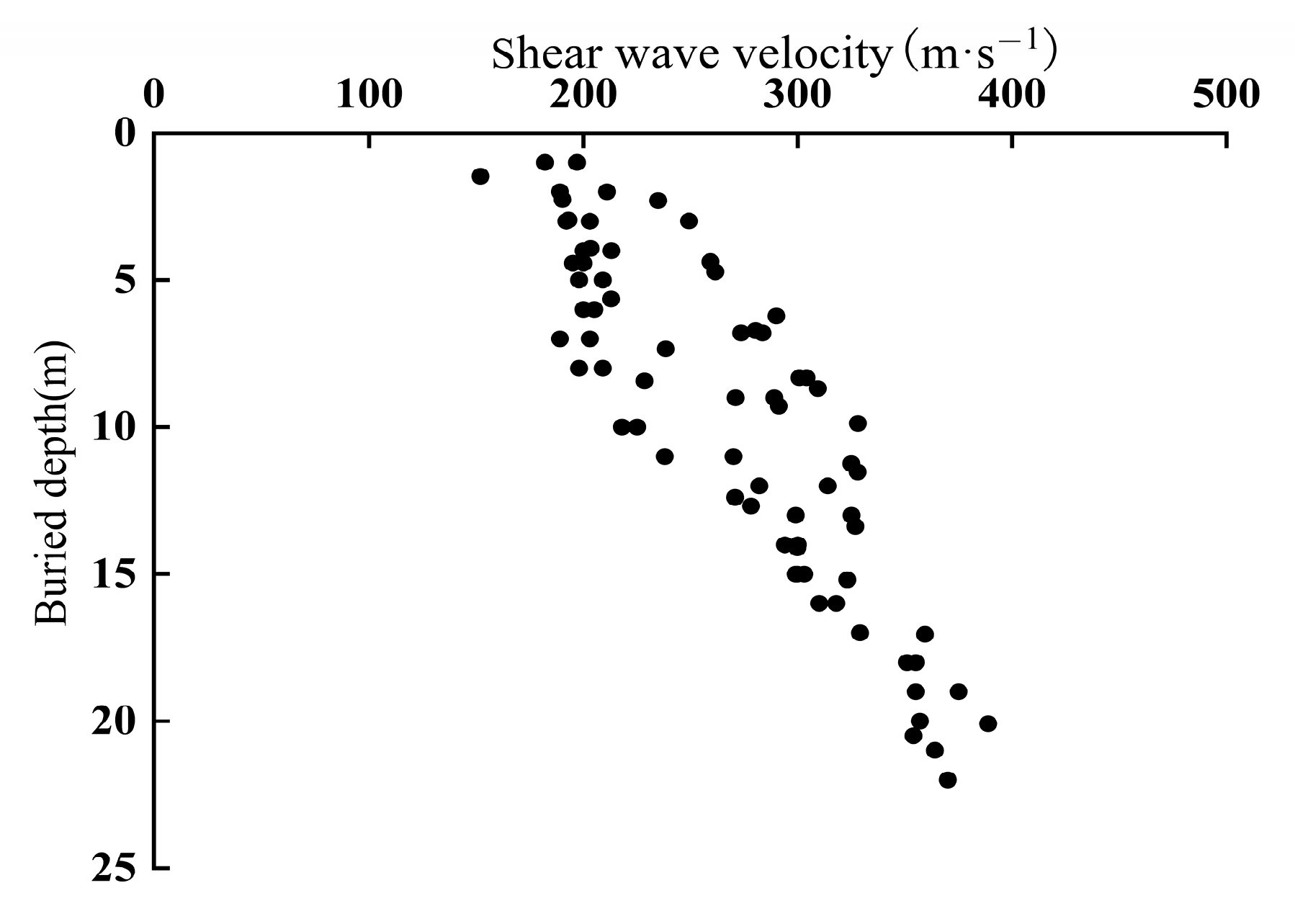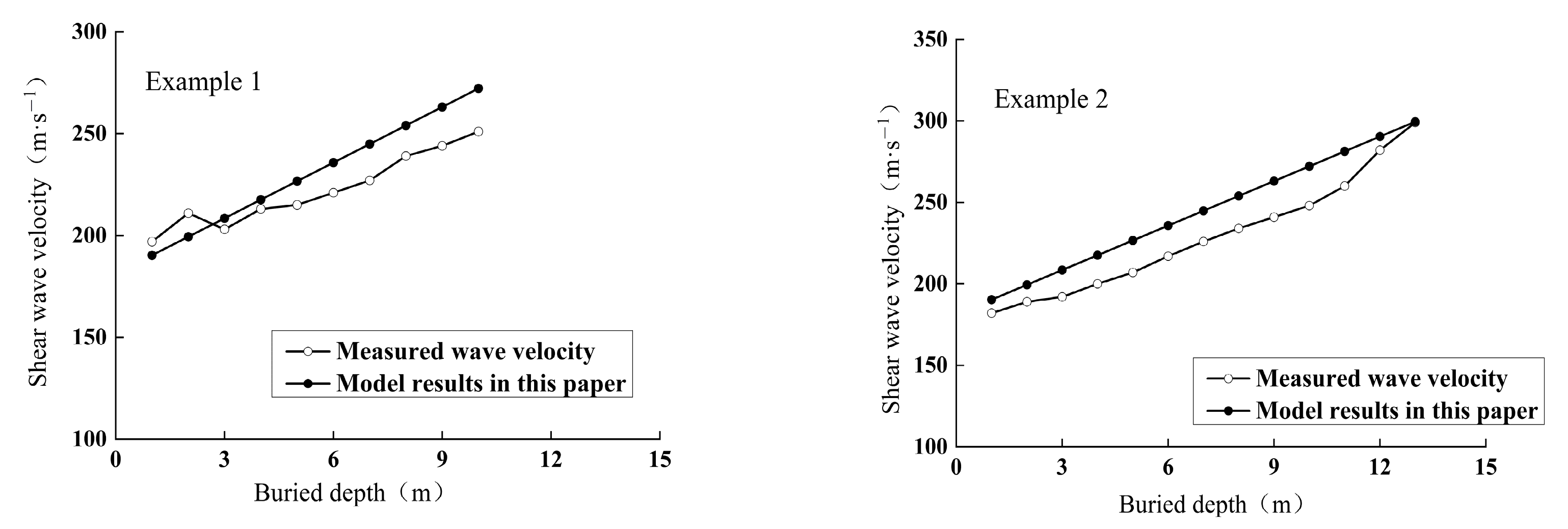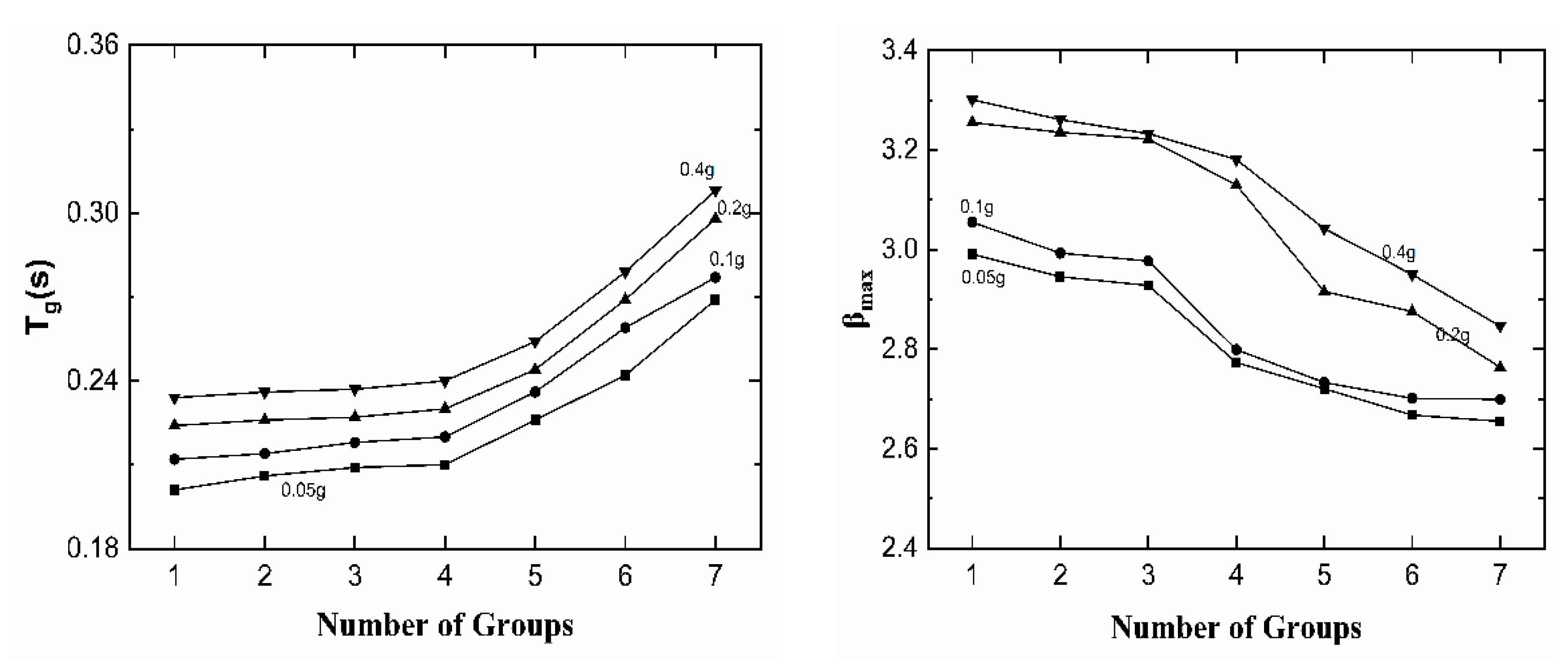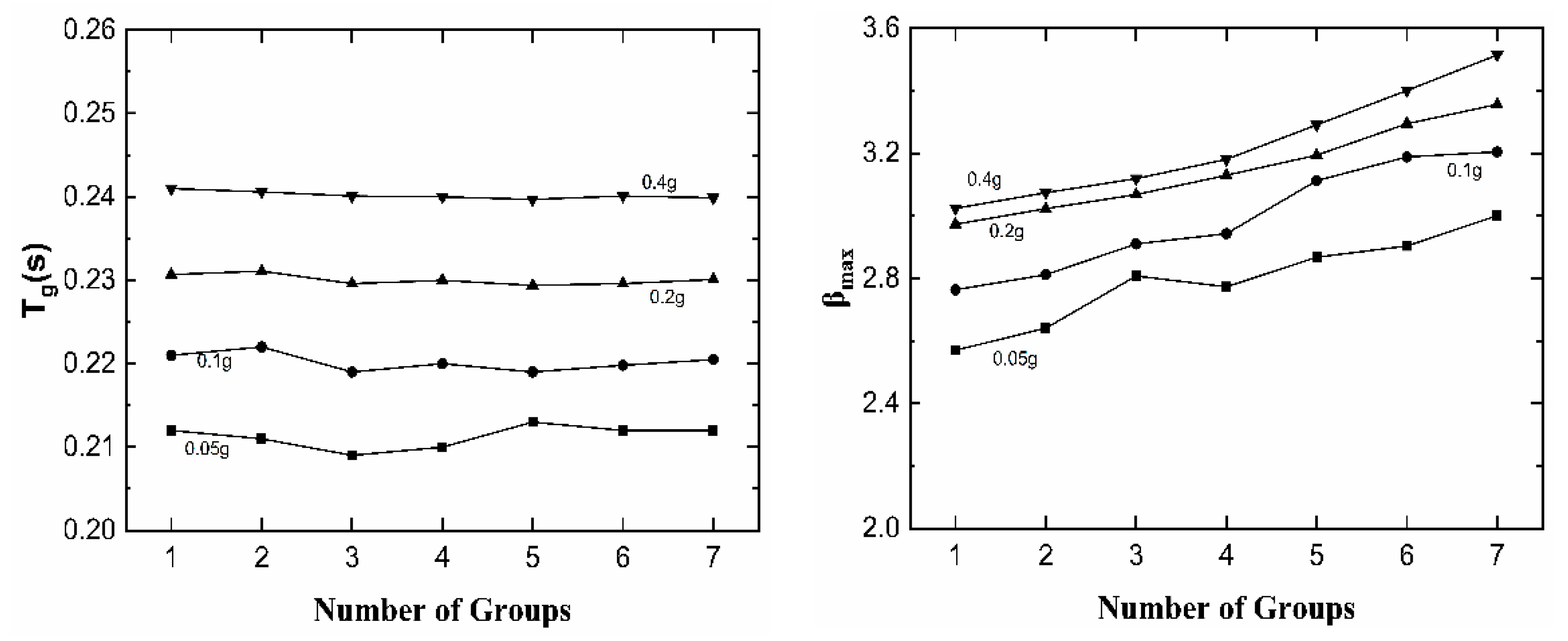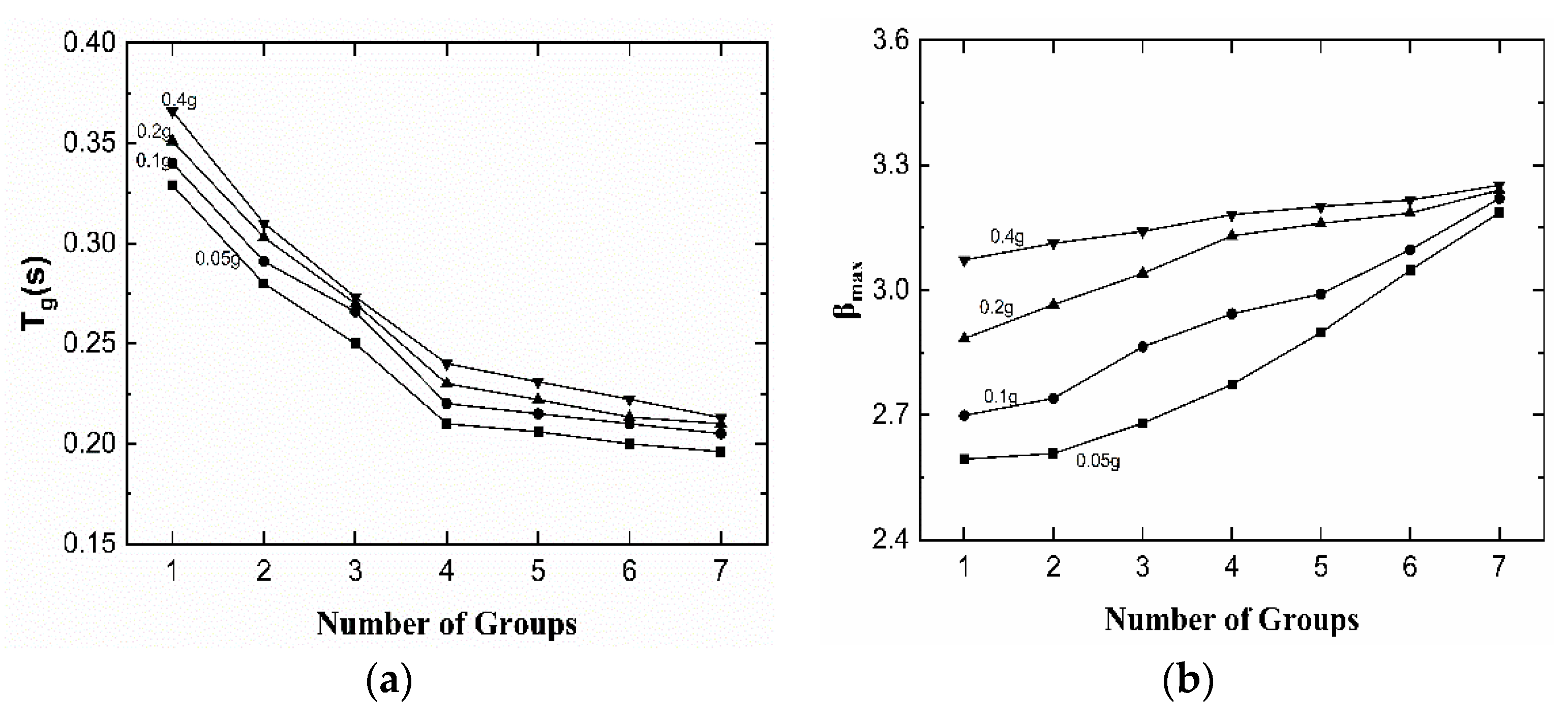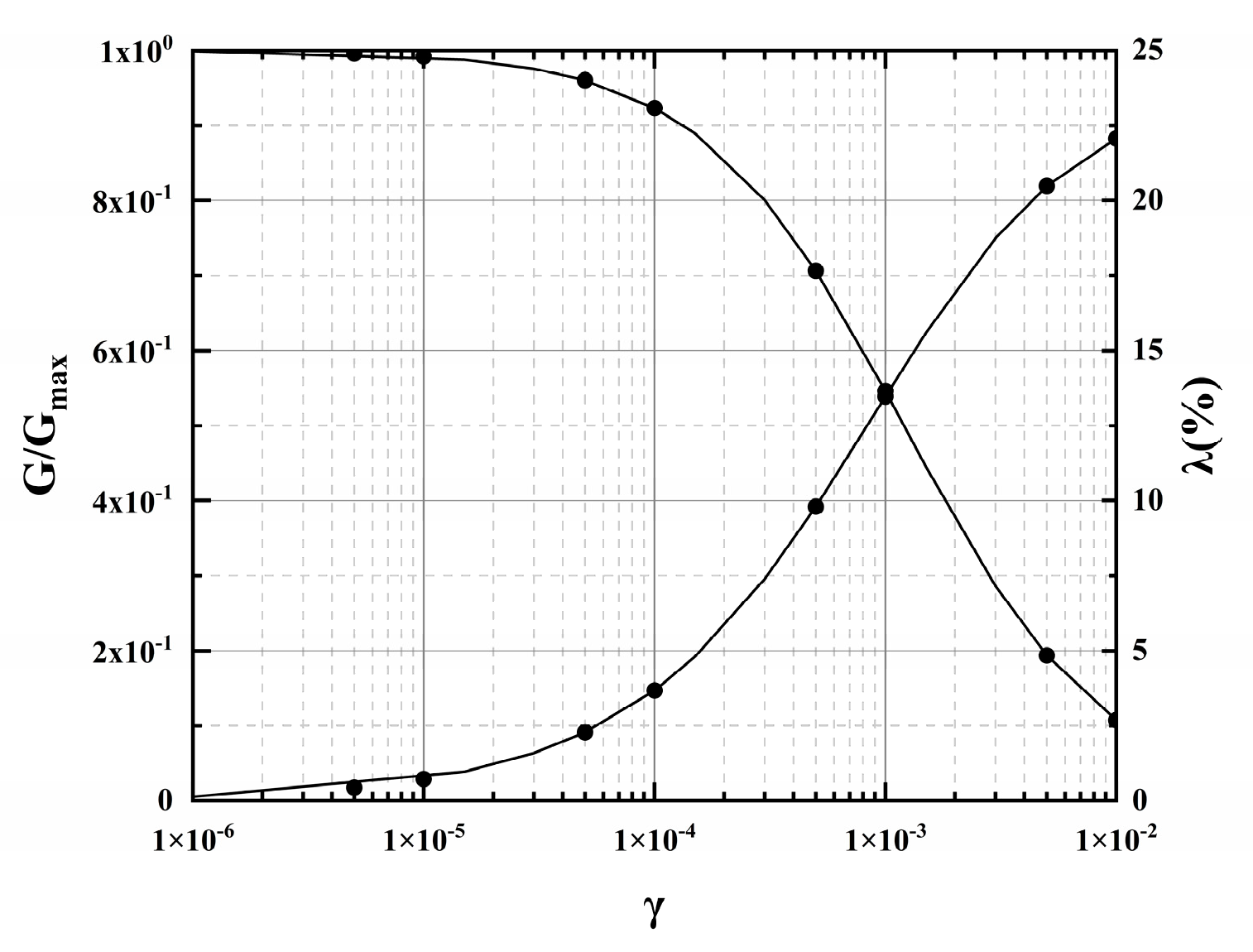2.1. Overview of Physical and Mechanical Properties
In this paper, various physical and mechanical properties of the loess in the Haiyuan area are classified and statistically analysed. The results are listed in
Table 1 and
Table 2.
In
Table 1, the natural water content refers to the ratio of the mass of water in the soil to the mass of soil particles in the natural state
ω and is expressed as a percentage (%), which is obtained by the common indoor drying method. The void ratio refers to the ratio of the void mass in the soil to the volume of solid particles, and is an index to describe the structural characteristics of the soil, expressed by
e. Density refers to the mass of unit volume of soil
ρ is expressed in grams per cubic centimetre (g/cm
3), and is mainly divided into natural density and dry density. The soil mass density in this paper is the natural density of the soil mass, which is usually measured by the ring knife method with an internal diameter of 79.8 mm. The liquid limit refers to the boundary water content between the plastic state and flowing state
ωL and is expressed as a percentage (%). The plastic limit refers to the boundary water content between the plastic state and the semisolid state. The
ωP is expressed as a percentage (%) and is commonly used in indoor photoelectric liquid-plastic limit joint testing. The liquidity index is an indicator of the relative relationship between the natural water content and the limit water content, expressed by
IL,
. The plasticity index is an important index to characterize the physical properties of fine-grained soil, expressed by
IP,
. The compression modulus, the ratio of the vertical stress to the total vertical strain of the soil under the condition of complete lateral deformation, expressed as
ES, in megapascals (MPa), can be obtained through an indoor compression test. The internal friction angle is the shear strength line
σ-
τ inclination in the coordinate plane, using
φ, and is expressed in degrees (°), which can reflect the size of internal friction between particles in the soil mass. Cohesion refers to the mutual attraction of adjacent parts in the soil mass, expressed in
c, and expressed in kilopascals (kPa). Both are obtained through indoor triaxial consolidated undrained tests. The meaning of the same symbol in the following is the same.
In statistics, the coefficient of variation is commonly used to indicate the degree of dispersion of a set of data. Generally, the larger the coefficient of variation is, the greater the degree of data dispersion; conversely, the smaller the coefficient of variation is, the smaller the degree of dispersion.
Table 1 shows that except for the liquidity index, the coefficients of variation of the other physical variables of the loess in the Haiyuan area are close to approximately 0.10, with a relatively stable trend. Notably, the coefficient of variation of the plasticity index is the smallest at 0.06, and that of the liquidity index is 1.72, which is a potential outlier. The coefficient of variation of the mechanical property index is obviously larger than that of the physical property index. This may be related to the many complicated factors that affect the mechanical property index, such as the compressive modulus and viscosity of the soil. The coefficient of variation of cohesion is approximately 0.60, which is relatively high, and the coefficient of variation of the internal friction angle is 0.30, with a relatively stable trend throughout the study area.
In statistics, the correlation coefficient
R is often used to express the correlation between two variables, according to Formula (1), and it falls within the range of [−1, 1]. A value of |
R| close to 1 indicates a high correlation between the two selected variables, and vice versa as |
R| approaches 0. According to the value range of the correlation coefficient, the correlation degree of two variables can be divided into four cases [
16]: when |
R| falls in the interval of [0.8, 1], the two variables are highly correlated; when |
R| falls in the interval of [0.5, 0.8), the two variables are moderately correlated; when |
R| falls in the interval of [0.3, 0.5), the two variables are slightly correlated; and when |
R| falls in the interval of [0.0, 3), the correlation between the two variables is weak and can be regarded as irrelevant.
where
R is the correlation coefficient;
x and
y are statistics; and
n is the number of statistical samples.
From
Table 2, it is not difficult to find that there is a significant correlation among five indicators in the Haiyuan area: the natural water content, void ratio, density, liquid limit, and plastic limit of loess. Among them, the natural water content, void ratio, and density are highly correlated, and the correlation coefficients are all within the interval of [−0.95, 0.95]. There are moderate correlations among the liquidity index, plasticity index and natural water content and between the void ratio and density. The liquid limit and plastic limit display a correlation coefficient of 0.734, which is a moderate correlation. In other cases, the correlation coefficients between the various physical and mechanical indicators are all below 0.5, which is a low degree of correlation, with no correlation observed in some cases.
2.2. Correlation Analysis between Various Physical and Mechanical Properties
In actual analyses, problems such as sudden changes in test conditions, improper operation of test equipment by personnel, or unstable performance of test instruments may occur, among other issues. Thus, abnormal data may be obtained. Outliers will adversely affect the results of data analysis; therefore, the outliers that may exist in data must be eliminated before statistical analyses are performed [
17]. In statistics, significance testing is often used to determine whether there are outliers in a set of data. The following methods are commonly used to identify low-probability events and treat them as outliers. In this paper, the double variance principle based on the normal distribution is used to screen the physical and mechanical index values of 181 loess samples in the Haiyuan area and eliminate the abnormal values. The screening results are listed in
Table 3. In this paper, the selected statistics are used to assess the relationships between physical and mechanical properties.
Based on the classification standard of the correlation coefficient, the correlations among various physical and mechanical indexes of loess in the Haiyuan area are calculated. Notably, for variables with a correlation coefficient between 0.5 and 1 or −1 and −0.5, with a medium to high degree of correlation, regression fitting analysis was performed after outliers were eliminated, and the correlations between different indicators were analysed. In this paper, SPSS software(SPSS version 10.0 SPSS Inc., Chicago, IL, USA) is used to compare the goodness of fit of various regression equations and select the regression equation with the best regression fitting effect as the recommended fitting model for the corresponding physical and mechanical indicators. In cases in which the degrees of fitting are similar, the model with fewer parameters and a simpler form is selected. The relevant statistical results are listed in
Table 4, and the corresponding scatter diagram is shown in the
Appendix A.
There are usually three methods applied to test the significance of results obtained with a unary regression equation. In the first approach, a scatter plot with a linear distribution is established. In the second method, the correlation coefficient of the two regressors is used. In the third approach, precise mathematical methods are applied for hypothesis testing, including linear relationship testing (
F Test) and regression coefficient testing (
t test) [
16,
18]. The
F test and
t test are equivalent in some ways. For example, if there is a linear relationship between the independent variable and the dependent variable, the regression coefficient between the two must not be equal to 0. In this study, the
F test is used to assess the significance of the regression equation.
The F test is divided into 3 steps: (1) Propose the hypothesis that the two indicators are not correlated; (2) Calculate the F statistic; and (3) Determine the significance level α according to the number of degrees of freedom of the numerator (in this case, 1) and the denominator n − 2, as obtained from the F distribution table) to calculate Fα. If F is greater than Fα(1, n − 2), then the null hypothesis is rejected; that is, the two indicators are considered to be correlated. If F is less than Fα(1, n − 2), then the original hypothesis is not rejected, which means that there is no correlation between the two indicators.
In this paper, under the condition that the significance levels α are 0.05, 0.01, and 0.001, the hypothesis test is performed on the fitting formulas in
Table 4, and the
F value of each fitting formula is calculated and compared with the corresponding
Fα in the
F distribution table. The results show that there are correlations between the physical and mechanical properties in
Table 4. For details, see
Table 5.
In statistics, when
F is greater than
Fα(1,
n − 2), the regression effect of the fitting formula is considered significant [
19]. When α = 0.05, the regression effect is considered mildly significant; when α = 0.01, the regression effect is considered significant; and when α = 0.001, the regression effect is considered extremely significant. The above method was used to test the regression effect of each fitting formula in
Table 4, and the results show that
FIP-
ω,
FIL-
ρ, and
FIP-
ρ are all greater than
F0.05 but less than
F0.01; therefore, the data regression effect is significant. Additionally,
FIL-
e is greater than
F0.01 but less than F0.001, reflecting a significant regression effect. The
F values in other cases are greater than
F0.001, and the regression effect is extremely significant.
By comparing the goodness of fit and statistical results for various fitting formulas, it is found that there is a proportional relationship between the two types of properties. The closer the goodness of fit is to 1, the stronger this relationship is.
